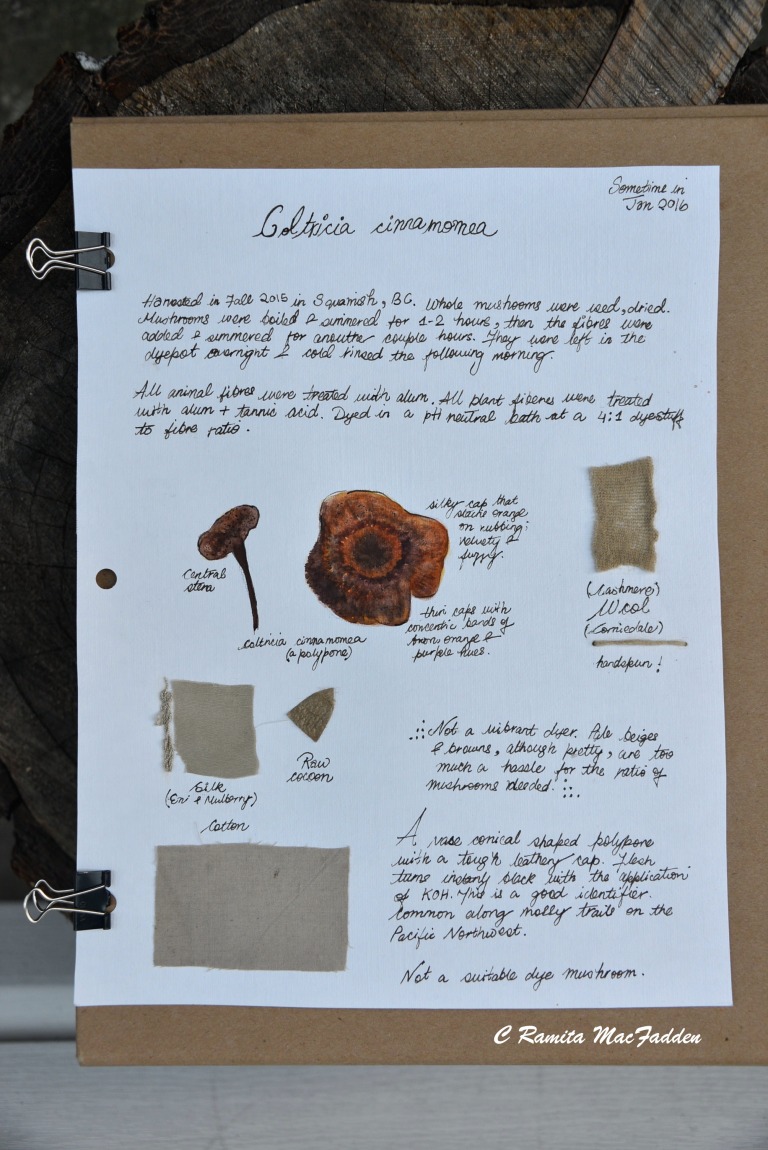This silky cinnamon colored polypore grows abundantly along mossy trails on the West Coast. Their conical caps are thin, leathery with a mild velvety top featuring concentric bands of beige, brown and even purple! The stems are centrally located and have pores..hence the term ‘polypore’. This is a very prolific and easy to identify fungi here in BC, Canada.

I was initially attracted to their dye potential when they stained my hands a rusty orange on handling. They are listed in “A Rainbow Beneath my Feet” book as dyeing various shades of beige. We collected a large handful of specimens last Fall and air dried them. A simple experiment was done on plant (cellulose) and animal (protein) fibers. We used unbleached cotton treated with tannic acid (Quebracho bark powder) and then alum mordant. The animal fibers used were recycled cashmere, handspun corriedale wool, thrifted handwoven mulberry silk, some Eri silk thread and a piece of raw silk cocoon; these were only treated with alum after scouring.
I used whole dried mushroom at a 4:1 fungi to fiber ratio. I boiled the mushrooms for a bit, reduced heat to a simmer and added my fibers. I simmered for several hours them let them steep covered overnight. The fibers were then rinsed in cool tap water and air dried. Everything was done at a neutral pH range.

All fibers resulted in brown-beige color. Only notable color is that of the raw silk cocoon – pretty and vibrant. Otherwise not a good dye mushroom at all. I would classify this as a ‘dyer’s dud’ :). Moral: just because a fungi stains a nice orange color does not mean it will dye orange as well! Even failures need to be recorded:
